Let there be warmth! Principles of correct connection of heating radiators
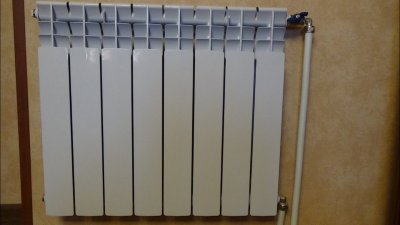
Any heating system, except for an electric one, contains a heat carrier, which heats the air in the room through its walls.
Pumps and pipes are used to circulate the coolant.; pipes are connected in different ways, the choice of which largely determines the efficiency of the entire heating system as a whole. To find out why it is so important not only to purchase the right radiator, but also to choose the right way to connect it, you need to understand the types of the latter in more detail.
Content
One-pipe heating system in the house: where to connect the taps
All radiators in the room are connected by pipes for transporting the coolant from one device to another. A complex of pipes, radiators and devices (boiler, pump) necessary for maintaining the temperature and circulation of water is called a heating system.
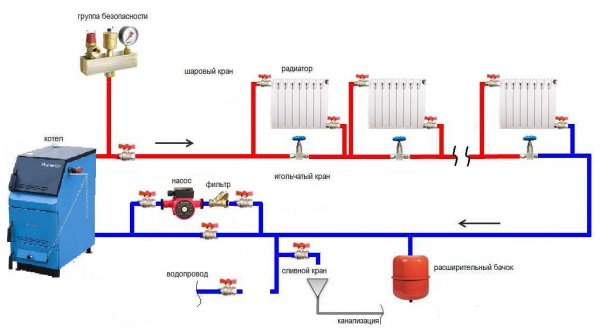
Photo 1. One-pipe heating system. The hot coolant is marked in red, the cold one in blue.
The single pipe design connects each battery to another with a single pipe, which closes on the boiler. The central mechanism becomes, as in any other scheme, a heating boiler, which heats the water to the required temperature, after which it flows through pipes to the radiators.
Attention! A chain is formed, and if one element stops working, for example, for some reason the water gets stuck, then the device will not heat further, because the coolant will stop flowing.
Pros:
- Possibility of regulating the direction of movement of the coolant. This is important for setting the priority when heating certain rooms in the house - those located on the windy or north side need to be heated faster, so the coolant should get to the radiators of these rooms first.
- Easy (direct) connection of additional chain links - heated floors, towel dryers or a heating coil in the bathroom.
- Different types of boilers can be installed in case one of them does not cope well with heating or its use at a specific time is ineffective: for example, solid fuel and electric, in pairs.
- The heating structure circuit can be laid under walls or baseboards, to hide it from view.
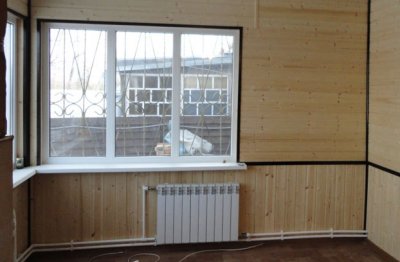
Cons:
- If the system has been idle for a long time, it will not be possible to start it quickly: the water will have to reach the outermost points of the circuit for heat to begin to spread throughout the house.
- There is one circuit in the circuit, which is why there is damage to it or intentional disconnection of one of the radiators will lead to complete failure of the entire structure.
- When setting up a single-pipe connection in a multi-storey building heat loss to the lower floors cannot be avoided from the boiler and overheated radiators on the upper floors.
- Temperature in batteries depends on the distance to the boiler.
One-pipe system diagram: A pipe is connected from the heating boiler, which connects all the elements of the heating system and ends at the same boiler. Connection:
- The pipes leading to the radiators are located at an angle of 0.5 cm per 1 meterto avoid the formation of air locks.
- Before installing the radiators, they are mounted shut-off valves, to be able to turn off the device without draining the coolant.
- Drain tap mounted at the lowest point.
- If there is no pump in the system, then it is gravity-based - for normal operation, the collector must be installed at a level of 1.5-2 meters from the floor.
Reference. This connection option is ideal. for small one-story houses, which do not have basements.
Two-pipe system: how to install it
If in the above case the coolant was supplied and removed through one pipe, then In this scheme, these tasks are divided: Hot water enters the radiators through one pipe and is extracted through another.
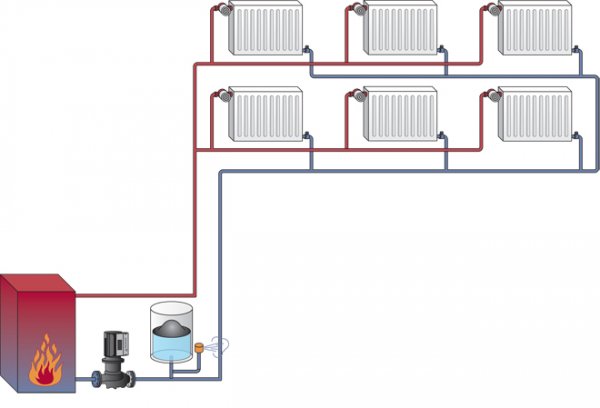
Photo 2. Diagram of a two-pipe heating system. This heating design uses different pipes for supply and return.
This feature complicates the design, but improves the efficiency of operation.
Important! To make installation easier, you need to choose this system at the construction stage, although installation is possible in a built house.
Advantages:
- The number of floors in a building will not affect the efficiency of the heating system, since the coolant is distributed with this connection option through two pipes, due to which the uneven temperature ratio on the floors disappears.
- Failure of one link in the chain (for example, a battery) will not result in the failure of the entire structure.
- The temperature in the radiators does not change due to distance; Thanks to the two-pipe distribution of the coolant, the heating of each element is uniform.
- Temperature control capability using a thermostat.
Flaws:

- A team of plumbers will be needed for proper installation., since the system is complex and consists of a large number of elements.
- With such a number of parts and necessary devices the question of price becomes significant: establish a two-pipe connection at least twice as expensive, than a single-pipe one.
Connection diagram: with natural circulation, an expansion tank is installed in the attic, where water from the boiler enters through pipes, after which it is distributed by gravity to the radiators on each floor below; if the system has a pump, it is mounted in the circuit after the boiler and drives water throughout the entire system.
How to connect:
- The pipe through which the coolant flows is located higher than the one through which the cooled water is removed.
- Installation of expansion tank must be carried out above the installation level of the heating boiler.
- Feed and discharge pipes are laid parallel to each other.
- Right angles are avoided., as air flaps appear in them.
- If the water circulation in the system is natural, then the supply pipe must have slope 0.5 cm per 1 meter of pipe towards the radiator.
Reference. For large private houses several storeys A two-pipe system is a suitable option for connecting a heating system.
Methods by which you can connect radiators
There are several ways to connect radiators to the heating system.
Bottom: connection nodes
It is difficult to disguise the pipes coming from the sides of the radiator. In order not to spoil the design of the room with plumbing communications, a lower connection is used, which carefully fed from below to two points on one side of the product.
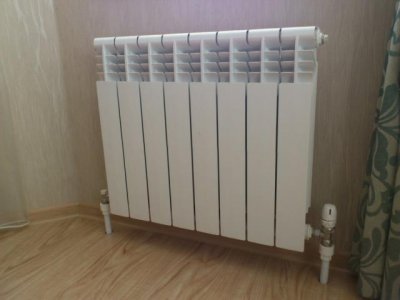
Advantages:
- Ease of camouflageThe two tubes at the bottom can simply be covered with a panel.
- With this type of connection the device can be easily disconnected from the system, without draining the coolant from the remaining batteries.
- The radiator panel heats up quickly, and water flows through it faster than with a standard side connection.
- Possibility to use both single and double pipe systems, as well as vertical and horizontal orientation.
Flaws:
- When the distance from the floor to the heater is small difficulties arise in editing, especially if there is a need to add a thermostat to the circuit.
Important! The efficiency of using the lower connection type increases when installing vertical radiators with it - narrow but high (about 1.5-2 meters) products that create a heat wave to eliminate sources of cold air penetration.
Lower connection nodes: shut-off valves on two circuits coming from the supply pipe, thermostat, Mayevsky valve (if necessary) and lower connection valves.
Scheme: Two circuits extend from the supply pipe, through which the coolant will enter and exit the radiator, and are connected to the heater using lower connection valves.
Side, features of heating the last sections
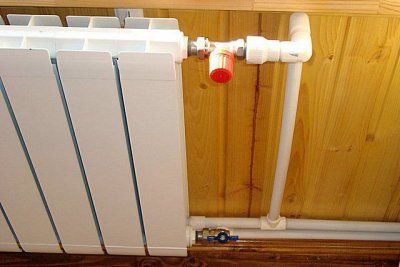
This is a common type of connection in communal apartments, since it is used when the pipe contour is oriented vertically. Both pipes (supply and return) are located on the side of the radiator.
In this case, the feed tube can be on one end and the outlet tube on the other, or, at the choice of the master, they can both be installed on one end.
Advantages:
- Easy installation method.
- Fast heating radiator.
- Effective use with vertical orientation of the heating system.
Flaws:
- Cannot be used with long batteries: the last sections remain unheated.
- Difficulty in camouflage.
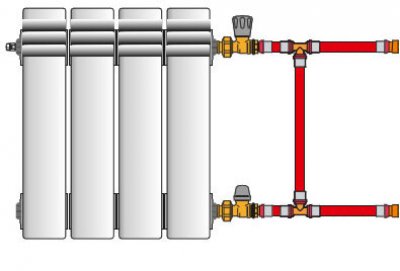
Side connection diagram: The supply circuit of the heating system, coming from the boiler or expansion tank, is fed into the heater from the side.
The outlet is either on one side (with a two-pipe vertical orientation) or on the opposite side (with a single-pipe orientation).
Connection:
- The supply and discharge circuits must not be disturbed: the first is always higher than the second.
- They are installed on the pipes shut-off valves, Mayevsky tap and thermostat.
Diagonal
The scheme is considered the best possible., since the coolant covers the entire area of the heater. The gist is simple: the pipe through which hot water flows is mounted at the top side of the product, and the collecting pipe for removing cooled water is mounted at the bottom. It turns out that the liquid describes an optimal route in the heater for the efficient operation of the system.
Advantages:
- Particularly effective when mounted on long radiators (from 10 sections), since here such a connection shows the best results in terms of water circulation speed and heat transfer power.
- Significant level of coverage of the heater area with coolant: The liquid is distributed evenly throughout the device, quickly filling the sections, which ensures an even wave of heat.
Flaws:
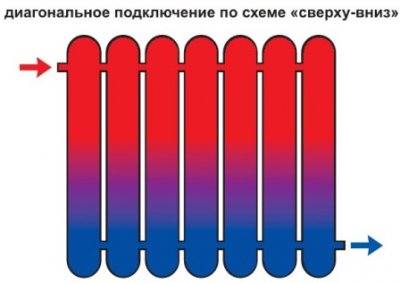
- Complex geometry of pipe layout, making it difficult to install the connection.
- Difficulties in camouflage.
- Large volume of necessary plumbing materials.
Diagonal connection diagram: The feed circuit is mounted at the top, the outlet circuit at the bottom on the opposite edge; the coolant passes the route from top to bottom.
Connection:
- It is necessary to use shut-off valves, since leaks and breakthroughs are dangerous in the case of complex branching.
- The pipes are run parallel to each other's plane.
Attention! With this connection method, a high water circulation rate is achieved, so the installation of a pump can cause inefficient heat transfer: the coolant will come out of the radiators still hot.
Natural circulation of water
This type of coolant circulation is typical for old small houses. In this case, the liquid moves through the pipes due to the increase in the distance between the molecules of the substance when heated and decrease when cooled. This is called hydrodynamic force, due to which cold layers of water descend, pushing new masses of hot liquid upward.
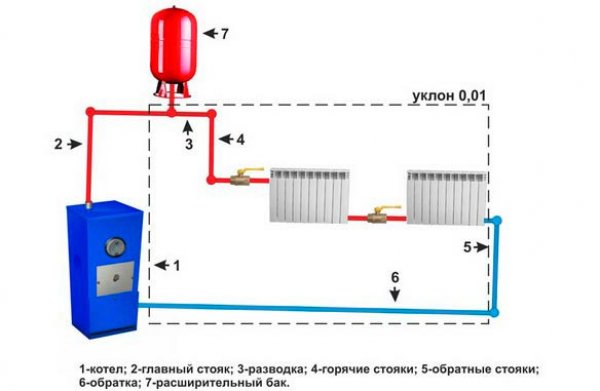
Photo 3. Scheme of a heating system with natural circulation of the coolant. The numbers indicate the components of the structure.
Features of natural circulation:
- There is no need for a large amount of material and expensive electrical equipment.
- The system has been working reliably for decades, since there are no complex elements that could fail.
- The radius of the water column rise with this method of circulation limited to the second floor.
- Each meter of pipe in the system should be at a slight slope (about 0.2-0.3 cm), otherwise the required rate of liquid supply and discharge will not be ensured.
Important! Straight pipes in this system should not be longer than thirty meters, otherwise the water mass will slow down in such a section, reducing the efficiency of the structure.
System diagram: From the heating boiler, the liquid flows through pipes to the expansion tank in the attic of the house, after which, under the force of gravity, it is distributed to all connected devices: radiators, heated floors, dryers, etc.
Connection:
- The design always maintains a slope from the boiler to the recipient (heater).
- Curved pipes, filters, taps and valves make it difficult for water to flow through the channel, so they the number must be reduced to the limit.
- The difference in the level of the tank above the radiators affects the rate of water distribution: the higher, the faster.
Forced water circulation
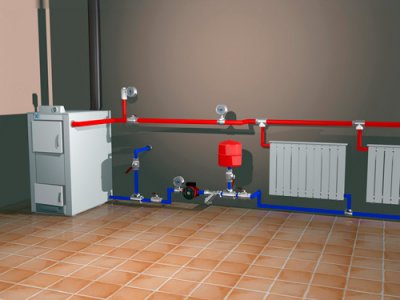
Natural distribution of liquid is used extremely rarely due to its low efficiency. Preference is given to the forced method of driving liquid through pipes.
In this version, the circuit includes circulation pump. Peculiarities:
- A device that consumes electricity appears, which results in costs. If the electricity is turned off, the pump will also stop working.
- The pump maintains the required pressure at any pipe diameter, but at such a level that the layers of hot and cold water do not mix, but gradually replace each other.
- Pipes can be pulled to a height exceeding the level of the second floor. A good pump is capable of creating the necessary pressure for the heating system to operate and in a 3-story building large area.
Scheme: Now, in addition to the above-described elements, a pump is included here; through the system channels, water from the heating boiler gets into the expansion tank with the help of a pump, and from there - into the chain links: batteries and other elements.
Connection:
- The pump in the heating circuit must always be placed after the heating boiler, otherwise cold water will flow through the system.
- It is no longer necessary to maintain the slope of the pipes, it can be completely abandoned, since the coolant will move through the channels anyway due to the pressure created by the pump.
- It is advisable to place the device in a room with a minimum number of pipes.to protect yourself from short circuits.
Photo of battery connection
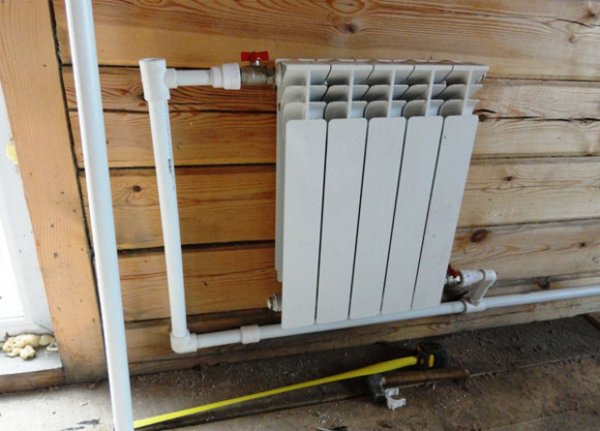
Photo 4. Connecting a heating radiator diagonally. The hot coolant is supplied from above, the cold one flows out from below.
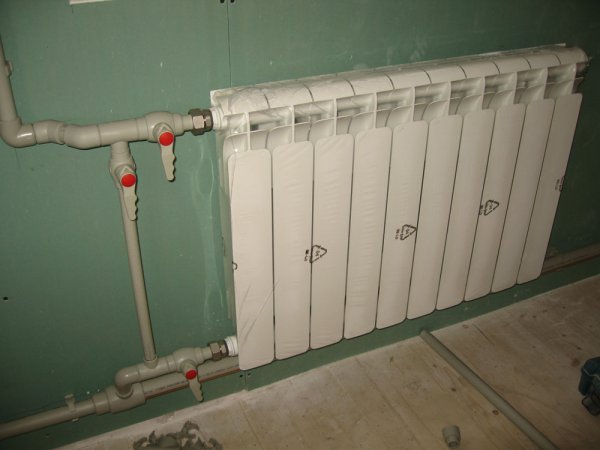
Photo 5. Connecting the heating radiator sideways. With this type of installation of the device, a bypass is required.
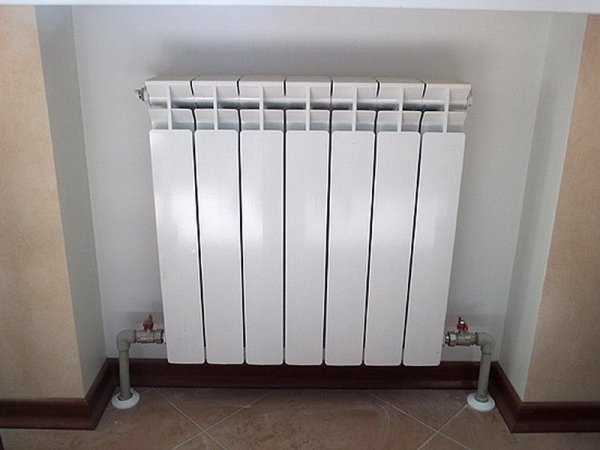
Photo 6. Heating radiator connected from below. In this case, the pipes are practically invisible.
Useful video
Watch the video, which explains how to properly connect radiators to the heating system.
When to choose the system connection type
To avoid problems with pressure drops, uneven distribution of coolant and poor heating, it is enough to take care of choosing the right type of radiator connection when designing the entire heating system. This step will allow you to think through the nuances of installation., make the work of plumbing specialists easier and select the most efficient type of connection for individual heaters and the heating system as a whole for the homeowner’s premises.








